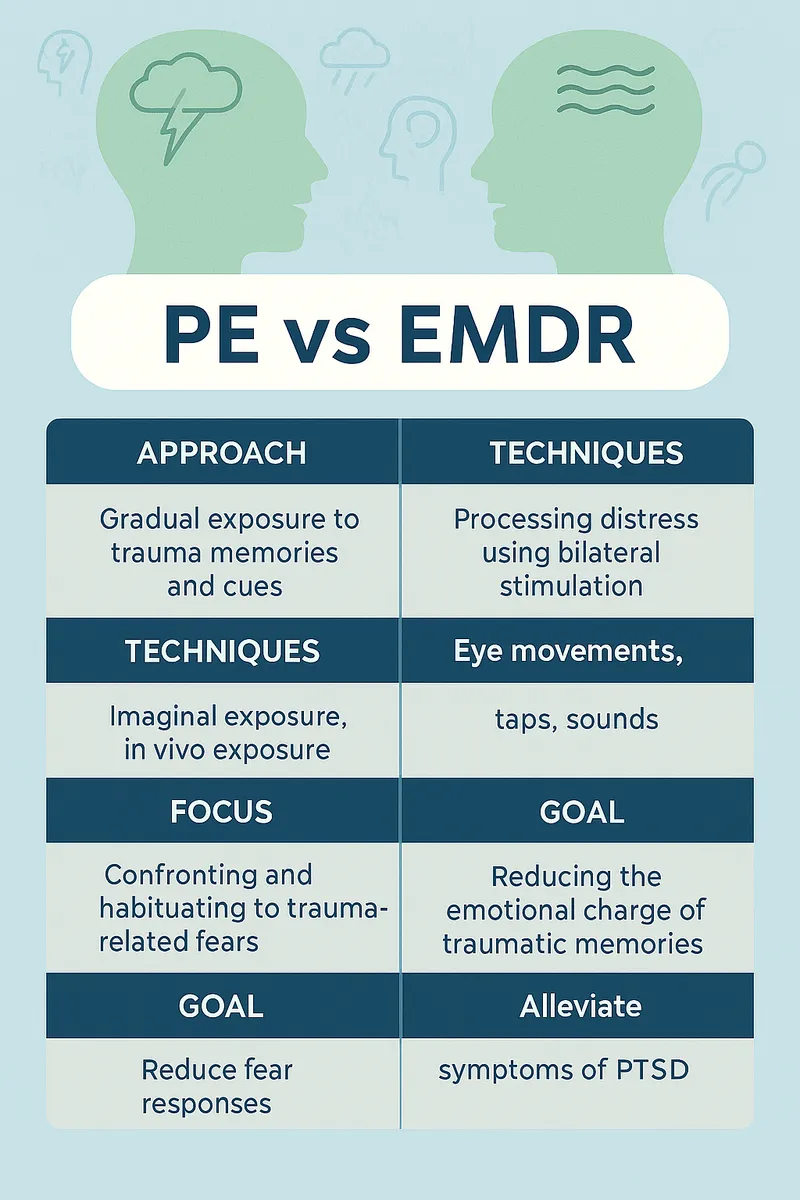Why emdr therapy new york counts for mental wellness
Just How EMDR Treatment Functions: an In-depth Look at the Process and Its Effectiveness
EMDR treatment has actually become a famous therapy for trauma-related conditions. Its structured method includes numerous stages made to promote the handling of upsetting memories. Central to this method is the concept of reciprocal excitement, which plays a vital function in exactly how memories are refined. Recognizing these aspects discloses much concerning the therapy's effectiveness. However, what particularly occurs throughout an EMDR session, and exactly how does it affect the restorative trip?
Understanding the Principles of EMDR Treatment
EMDR treatment, or Eye Movement Desensitization and Reprocessing, runs on the facility that unsolved stressful experiences can impede psychological health. This innovative restorative method aims to assist in the processing of traumatic memories, allowing people to gain a much healthier perspective on their past. Central to EMDR is the idea of bilateral excitement, generally attained through assisted eye motions, which is believed to assist incorporate distressing memories into a more adaptive structure.

The Eight Phases of EMDR Therapy
The procedure of EMDR treatment unravels over 8 unique phases, each made to guide customers via an organized method to healing trauma. The initial phase includes history-taking, where the therapist assesses the customer's background and recognizes target memories. In the second stage, customers learn relaxation strategies to handle distress. The third stage focuses on identifying adverse beliefs linked with the stressful memory.
The 4th stage is where the desensitization procedure starts, permitting clients to refine the distressing memory. The fifth stage entails setting up positive ideas to change the adverse ones. In the sixth stage, clients are directed to evaluate their psychological and physical responses to the processed memory. The 7th phase stresses closure, assisting customers return to a state of stability. The eighth phase includes reevaluation, where therapists and customers evaluate progress and attend to any residual distress. This detailed technique promotes a pathway to healing and durability.
The Duty of Reciprocal Stimulation
Bilateral excitement is an important element of EMDR treatment, facilitating the handling of distressing memories. This method entails alternating stimulation of both hemispheres of the mind, normally achieved via eye movements, acoustic tones, or responsive sensations. The objective of bilateral excitement is to engage the mind's natural information handling system, which may come to be interfered with following trauma.
By turning on both sides link of the brain, bilateral excitement helps clients gain access to and reprocess traumatic memories in a more adaptive method. This technique encourages the assimilation of terrible experiences, minimizing their psychological fee and making it possible for clients to develop brand-new point of views.

Furthermore, bilateral excitement might advertise relaxation and minimize stress and anxiety during sessions, developing a much safer atmosphere for customers to challenge painful memories. Ultimately, this technique improves the therapeutic procedure, enabling people to move toward recovery and resolution.
Evidence Supporting the Efficiency of EMDR
Research has revealed that EMDR therapy is reliable in treating different psychological problems, specifically trauma (PTSD) Many studies have actually shown significant decreases in PTSD signs and symptoms adhering to EMDR treatment. As an example, a meta-analysis of randomized controlled tests discovered that EMDR was as effective as cognitive behavioral therapy (CBT) for PTSD, with enduring results observed also months after therapy. Additionally, the American Psychological Organization and the World Health and wellness Company endorse EMDR as a recommended treatment for trauma-related conditions.
Past PTSD, research indicates that EMDR can additionally benefit individuals experiencing anxiousness, clinical depression, and phobias. An expanding body of evidence supports its use in diverse populaces, including experts and kids - licensed emdr therapists nyc. On the whole, the building up research study underscores EMDR's prospective as a flexible restorative option, paving the way for additional expedition into its mechanisms and applications in mental wellness therapy
What to Anticipate Throughout an EMDR Session
Throughout an EMDR session, clients can expect a structured yet flexible method intended at processing terrible memories. The specialist starts by developing a risk-free environment, where clients can feel comfy sharing their experiences. Preliminary discussions concentrate on recognizing details have a peek here memories and connected unfavorable beliefs.
Clients are assisted to concentrate on these memories while concurrently taking part in bilateral stimulation, generally via led eye motions or tapping. This dual emphasis aims to help with the handling of the injury, allowing customers to reframe their experiences and lower psychological distress.
Throughout the session, specialists keep an eye on clients' reactions, readjusting the speed and strategy as required. Sessions might consist of relaxation techniques or cognitive restructuring to strengthen favorable beliefs. Overall, clients can expect a helpful ambience that encourages self-exploration and recovery, ultimately leading to a higher feeling of emotional wellness.
Frequently Asked Concerns
Is EMDR Treatment Ideal for Children or Adolescents?
EMDR treatment can be suitable for adolescents and youngsters, provided it is adjusted to their developmental demands (licensed emdr therapists nyc). Clinicians typically change techniques to ensure security and performance, supporting younger populaces in processing injury and psychological distress
How Long Does EMDR Therapy Commonly Last?
EMDR treatment normally lasts in between 8 to 12 sessions, with each session varying from 60 to 90 minutes. Specific requirements and the intricacy of injury can affect the overall duration of therapy.
Can EMDR Therapy Be Done From Another Location or Online?
EMDR treatment can undoubtedly be carried out from another location or online. Numerous specialists have actually adapted their approaches to digital environments, permitting clients to involve in efficient sessions from the comfort of their homes, keeping restorative benefits.
What Are the Prospective Side Effects of EMDR?
Possible adverse effects of EMDR treatment might include momentary psychological distress, heightened stress and anxiety, vivid memories, and physical pain. People may additionally experience exhaustion or migraines following link sessions, as the mind processes extreme sensations and memories.
Exactly How Does EMDR Contrast to Typical Talk Therapy?

EMDR therapy, or Eye Activity Desensitization and Reprocessing, runs on the facility that unresolved distressing experiences can impede emotional well-being. The procedure of EMDR therapy unfolds over 8 unique phases, each made to guide customers with a structured approach to recovery injury. Bilateral excitement is a crucial component of EMDR treatment, helping with the handling of traumatic memories. During an EMDR session, customers can anticipate a structured yet flexible strategy aimed at processing traumatic memories. Potential side impacts of EMDR therapy may consist of short-term psychological distress, heightened anxiousness, vivid memories, and physical pain.